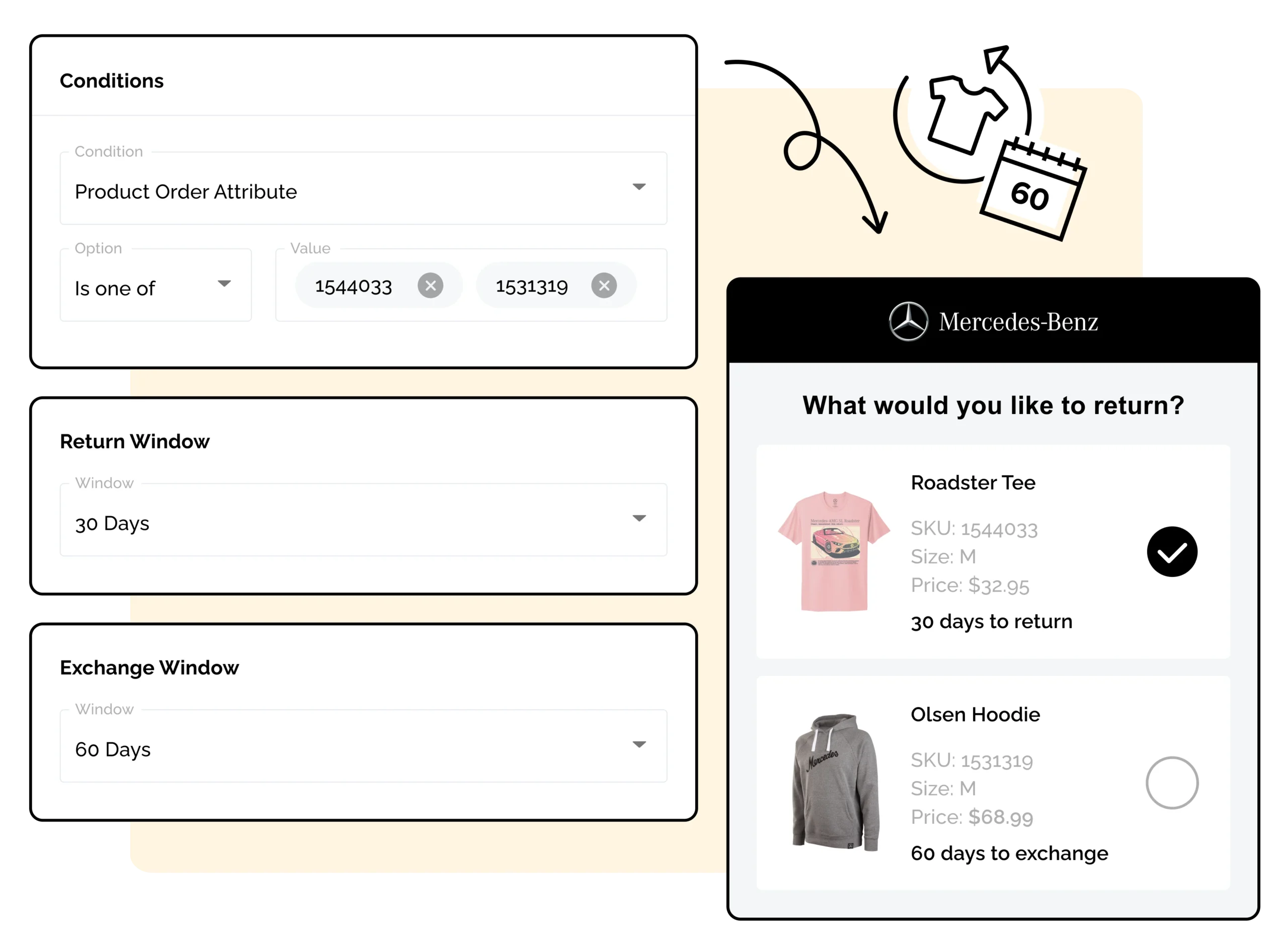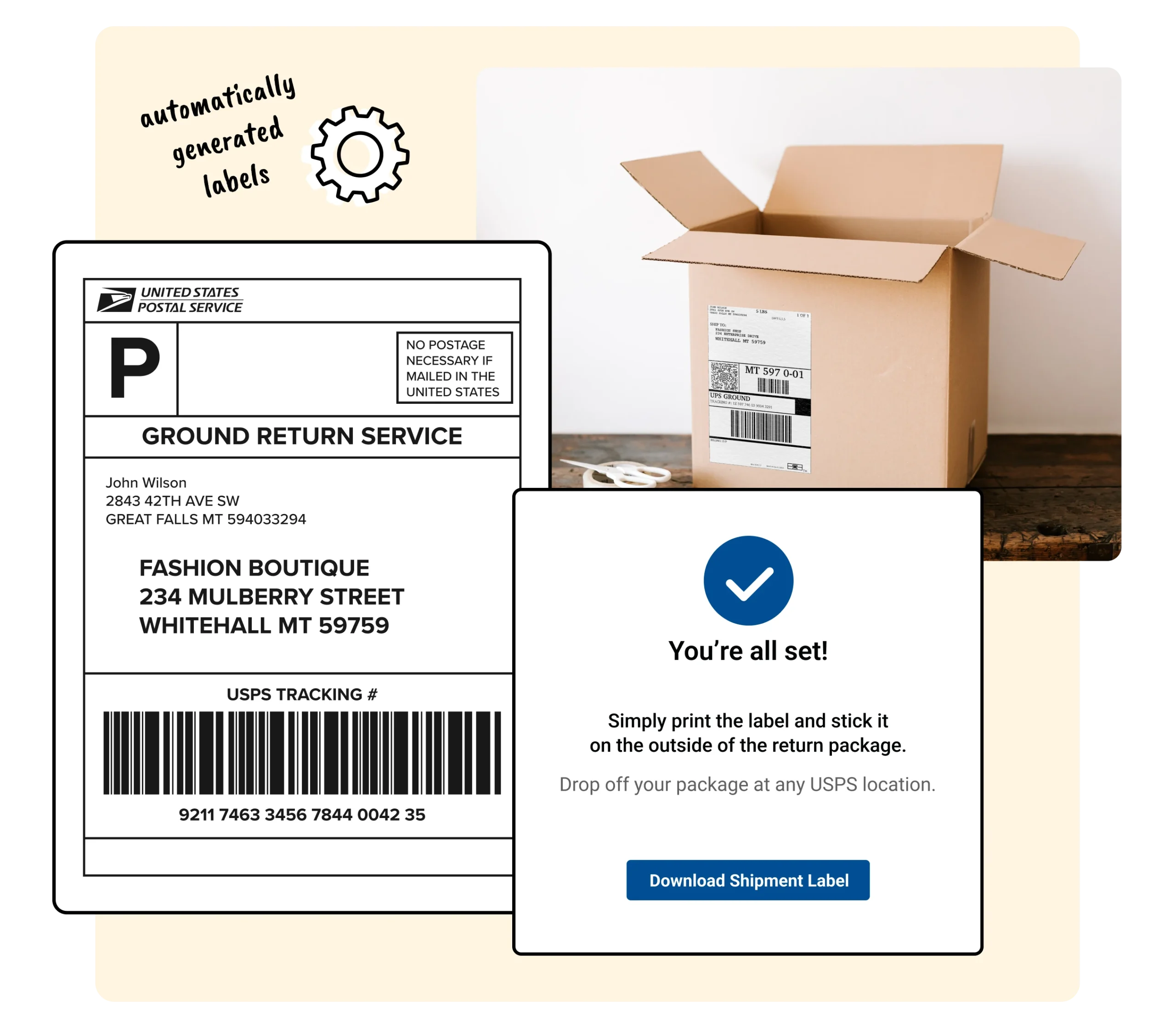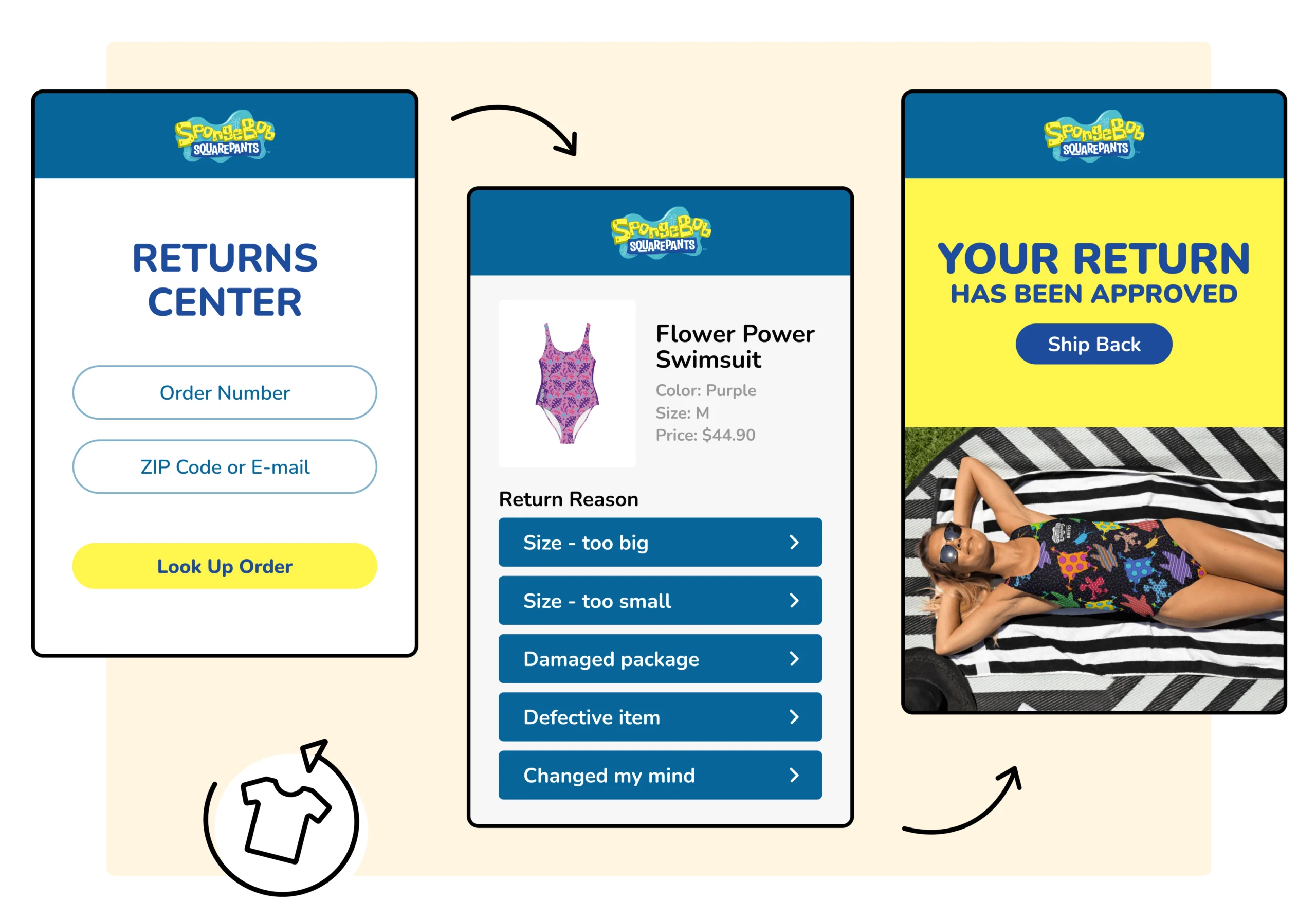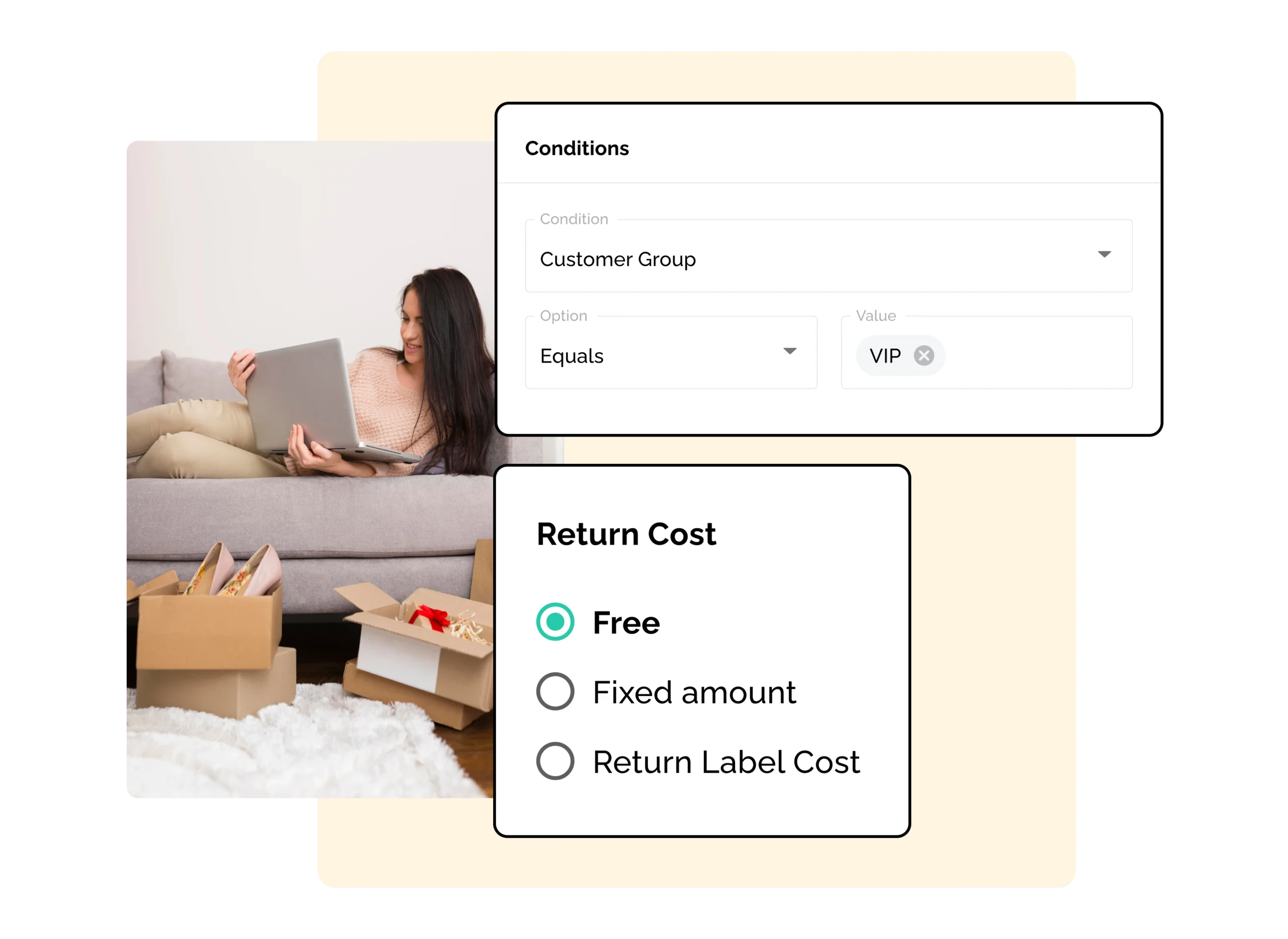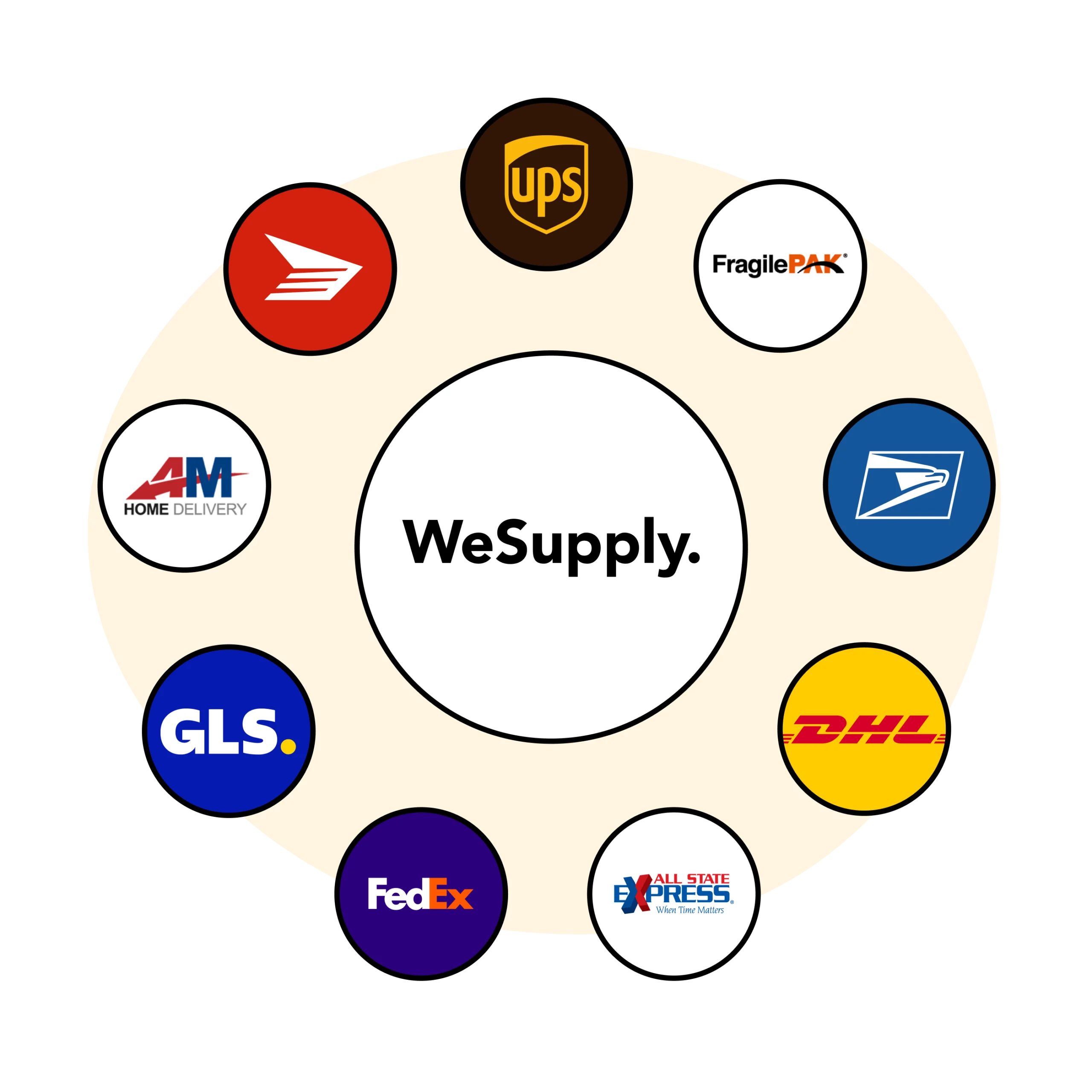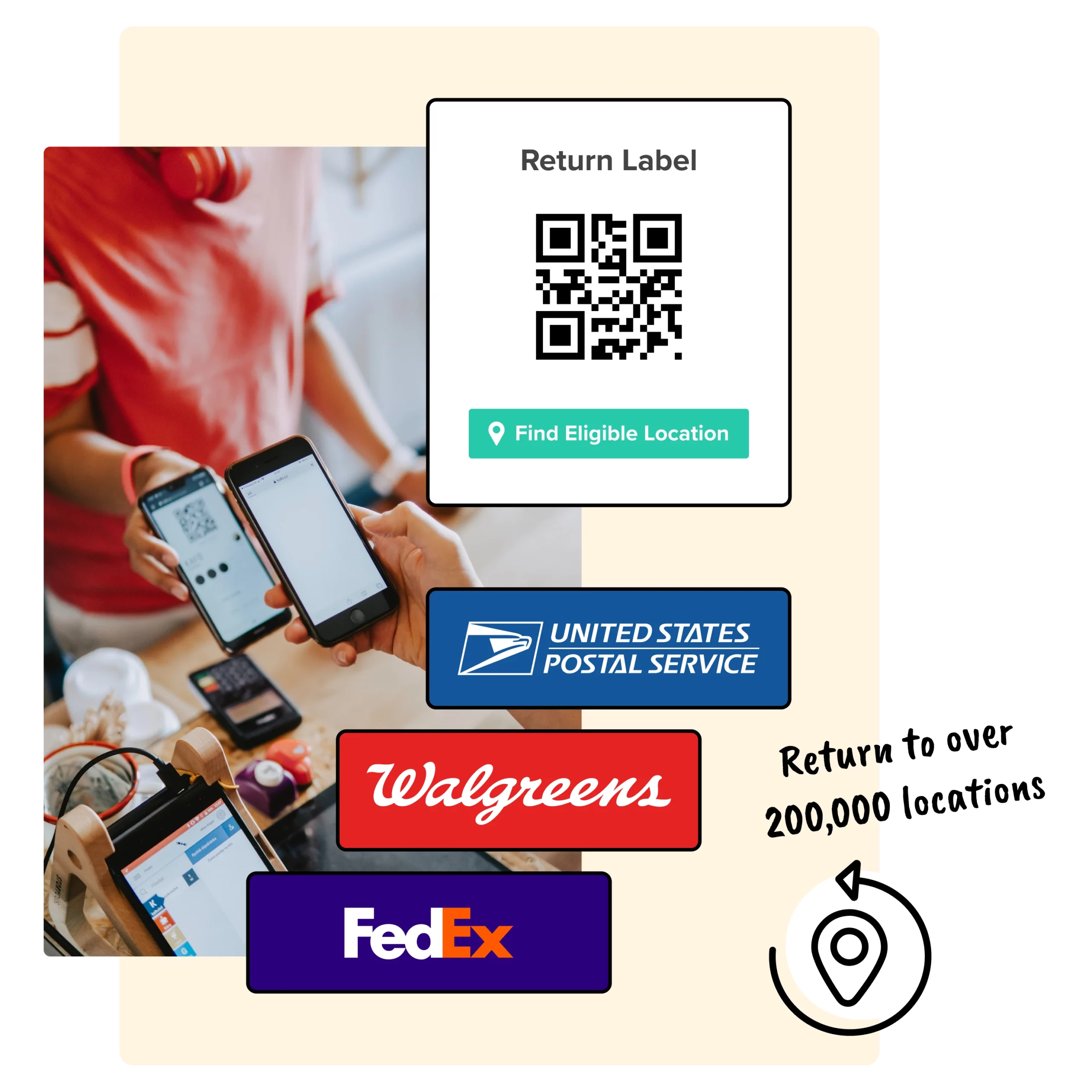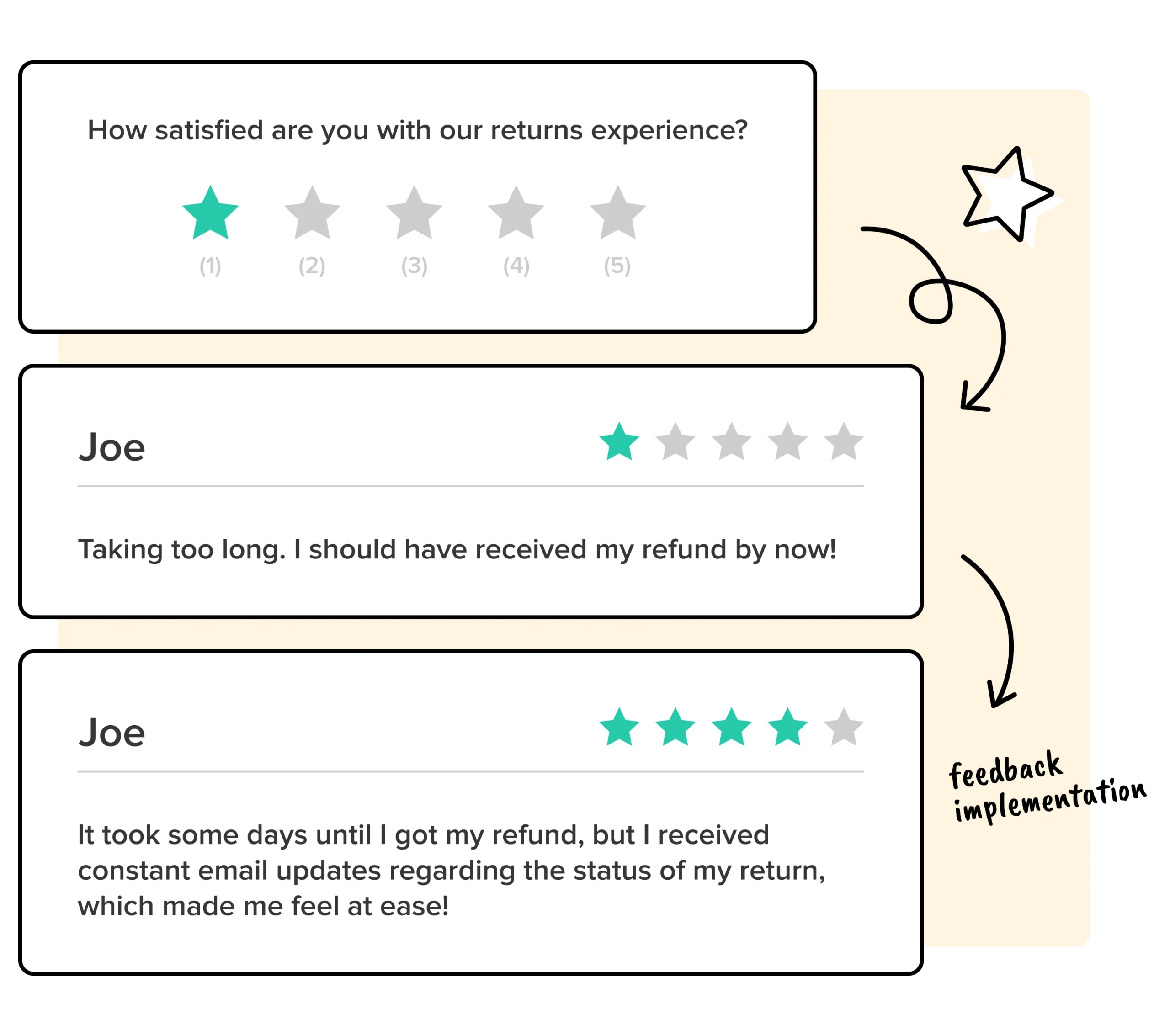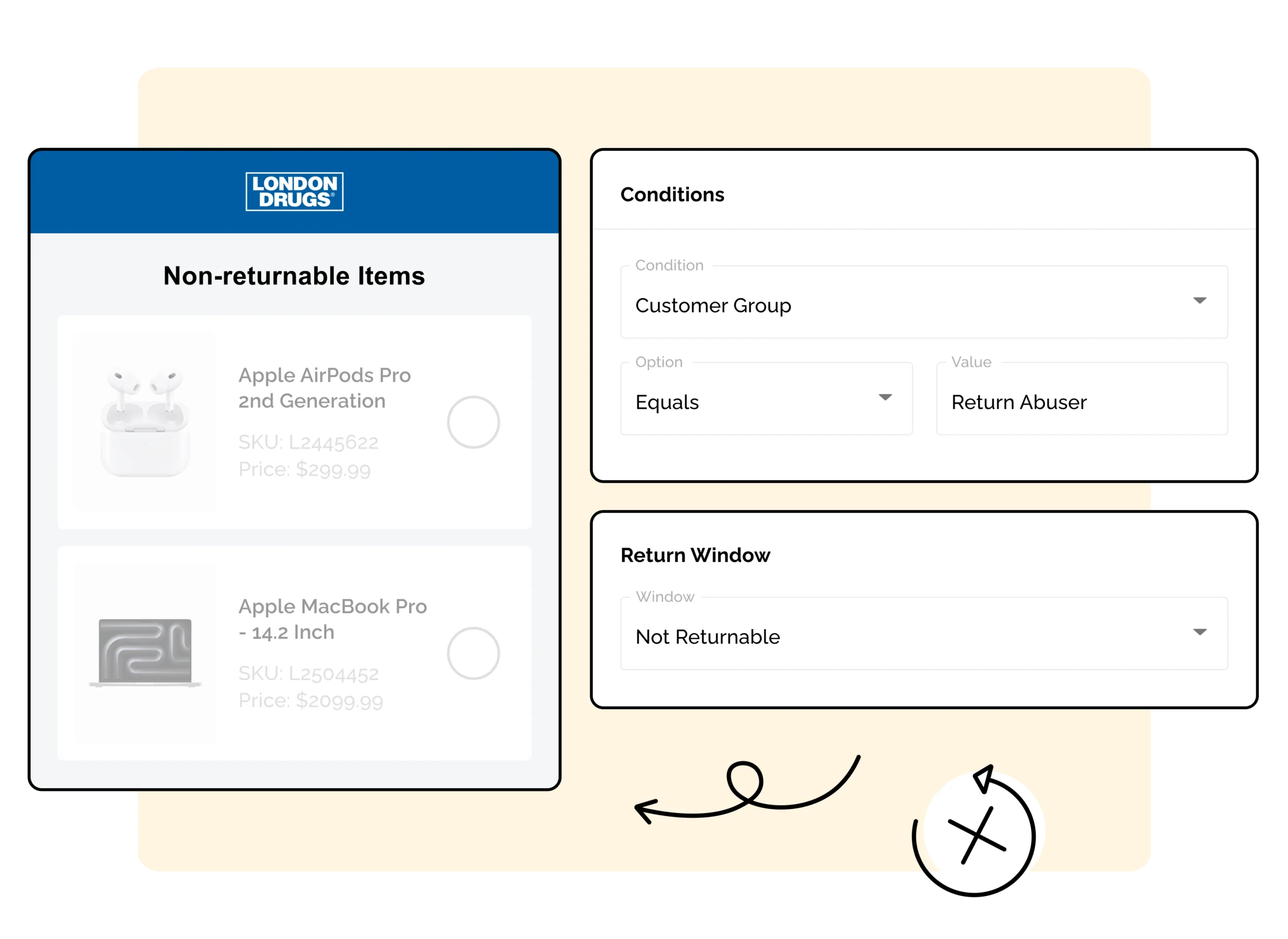Maximizing Cross-Border Deliveries and Returns with Asendia
Introduction: Why a Customer-Friendly Refund Policy is Crucial for Shopify Stores
A refund policy is an essential component of any eCommerce business, and Shopify stores are no exception. It outlines the rules and procedures for returning and refunding items, and a well-designed refund policy can significantly impact the success of your business. A customer-friendly policy not only fosters trust but also contributes to enhanced customer satisfaction and retention.
Creating a refund policy that customers can easily understand and rely on builds confidence in their purchasing decisions, reducing hesitation during checkout. By offering clear instructions on returns and refunds, store owners can create a frictionless experience that minimizes disputes and chargebacks. Shopify even requires all merchants to display a public-facing refund policy, and compliance with this requirement ensures that both customers and merchants are on the same page regarding expectations.
Key Elements of a Customer-Friendly Shopify Refund Policy
When drafting a refund policy for your Shopify store, it’s essential to define the key elements that will guide your customers through the return and refund process. These elements will create a framework that is fair, transparent, and easy to understand.
Return Window
The return window is one of the most critical components of your refund policy. It dictates the time frame within which customers can return items for a refund or exchange. Typically, Shopify store owners offer return windows of 14, 30, or even 90 days. The type of product you sell should inform the length of your return window. For instance, fashion stores may opt for a longer return window to accommodate fit concerns, while handmade goods stores might have a shorter window due to the unique nature of the items.
Product Condition Requirements
Clarifying the condition in which returned products should be is another crucial part of the refund policy. For example, you may require that products be returned unused, with original packaging, and with tags attached. While these conditions protect your business by ensuring the resalability of returned items, they must also be reasonable to avoid discouraging returns. A customer-friendly policy ensures that these requirements are not overly stringent and gives customers a clear idea of what is acceptable.
Refund Methods
Clearly stating how refunds will be processed is necessary for customer satisfaction. Customers need to know if they will receive a refund to their original payment method or store credit. Additionally, outlining how long it will take for refunds to be processed helps manage customer expectations. Offering multiple refund options, such as original payment or store credit, adds flexibility and convenience for customers.
Shipping Costs
Many Shopify merchants face the challenge of determining who should cover the shipping cost. A customer-friendly refund policy clearly addresses this, explaining who is responsible for the return shipping cost. In some cases, offering free return shipping can enhance customer trust, particularly for defective or damaged items. Clearly outlining shipping costs in your policy will help customers make informed decisions and prevent misunderstandings.
Shipping Costs
Many Shopify merchants face the challenge of determining who should cover the shipping cost. A customer-friendly refund policy clearly addresses this, explaining who is responsible for the return shipping cost. In some cases, offering free return shipping can enhance customer trust, particularly for defective or damaged items. Clearly outlining shipping costs in your policy will help customers make informed decisions and prevent misunderstandings.
Non-Returnable Items
Certain products, such as personalized items, clearance goods, or perishable products, may not be eligible for return. It is essential to identify these items upfront in your refund policy. By doing so, you establish clear expectations with your customers, avoiding potential frustration and conflict. Ensure that these exclusions are stated in a way that is easy to understand and justifiable. Perishable goods, for example, typically cannot be returned or refunded due to their time-sensitive nature.
Benefits of a Customer-Centric Refund Policy
A customer-centric refund policy offers several benefits that extend beyond reducing returns and chargebacks. When designed with the customer in mind, it can enhance your store’s reputation, increase sales, and foster customer loyalty.
Increased Customer Satisfaction and Loyalty
A straightforward and customer friendly return policy can improve customer satisfaction significantly. Customers who feel confident in their ability to return or exchange products without hassle are more likely to trust your store. This trust builds long-term loyalty, leading to repeat business and higher lifetime customer value.
Reduced Disputes and Complaints
A clear refund policy helps prevent misunderstandings. Customers are less likely to engage in disputes or file chargebacks if they know exactly what to expect regarding returns and refunds. By reducing customer complaints, you can also save time and resources on customer service and administrative tasks.
Boosted Sales and Confidence
When customers feel comfortable purchasing from your store due to a customer-friendly refund policy, they are more likely to make a purchase. About 60% of online shoppers review a store’s refund policy before completing a purchase. A fair and accessible policy reassures customers that they can make purchases without fear of being stuck with an unwanted item. This boosts overall sales and encourages customers to buy more confidently.
How to Craft a Customer-Friendly Refund Policy
Crafting a refund policy that works for both your business and your customers requires careful consideration of various factors. Here’s a step-by-step guide to creating a customer-friendly Shopify refund policy:
Step 1: Define Key Components
Start by defining the core components of your policy. These should include the return window, acceptable product conditions, refund methods, shipping responsibilities, and any exclusions (e.g., final sale or custom-made items). Be sure to be transparent and clear with each section.
Step 2: Make the Policy Accessible
Ensure that your refund policy is easy to find on your Shopify store. Ideally, it should be accessible from the footer of your website, in the checkout page, and in order confirmation emails. Having your policy easily accessible helps customers feel more confident while shopping.
Step 3: Use Shopify’s Tools
Shopify offers several tools to make creating and managing your refund policy easier. You can use the Shopify Admin’s “Settings > Policies” section to create or edit your policy. Shopify’s free Policy Generator allows you to generate a policy tailored to your store’s needs, ensuring compliance with legal requirements. You can also use automation tools to streamline the refund process, saving you time.
Step 4: Write with Clarity
When writing your refund policy, it’s essential to avoid complex legal language and use simple, understandable terms. Avoid legal jargon and keep the terms as clear as possible to avoid confusion. Customers are more likely to follow the return process if they can quickly grasp the policy details.
Step 5: Tailor the Policy to Your Products
Different types of products may require different refund policies. For example, fashion items may benefit from a more extended return window, while electronics may require stricter conditions for returns. Adjust your policy based on your product types to create a seamless experience for your customers.
Best Practices for Managing Refunds and Returns Efficiently
Once your refund policy is set up, it’s crucial to have an efficient system in place for handling returns. A streamlined return process saves you time, reduces customer frustration, and ensures a positive experience.
Streamlined Return Process
Using return labels and providing clear instructions on how to manage online returns are essential steps in creating a smooth return process. By offering customers the option to print a return label from your website, you remove friction from the process and allow them to return items without extra hassle.
Automation Tools
Shopify provides several tools that can help automate returns and refund processes. Apps like ReturnLogic integrate seamlessly with your store and enable you to manage returns efficiently. Automating the process allows you to handle returns faster and focus more on other aspects of your business.
Free Return Shipping
Offering free returns, especially for defective items, can enhance customer loyalty. It gives customers the confidence to make a purchase without worrying about extra costs. While this may involve a cost to your business, the long-term benefits of increased customer satisfaction and trust far outweigh the expense.
Refund Timelines
Communicate clear refund processing times in your policy. Ensure that you process refunds promptly—ideally within 1-2 business days. A fast refund process is a major contributor to customer satisfaction and can help prevent disputes and chargebacks.
Preventing Customer Disputes: Proactive Strategies for Success
Disputes can arise when customers feel that your refund policy is unclear or unfair. Proactively preventing disputes is essential for maintaining customer relationships and minimizing chargebacks.
Transparent Refund Rules
Clearly outline your refund rules in your policy, including the timeframe, condition requirements, and how to complete a return request. By setting clear expectations, customers are less likely to misunderstand the terms and initiate disputes.
Regular Updates
Keep customers informed about the status of their returns and refunds. Providing return tracking information and refund processing updates helps reduce anxiety and keeps the process transparent. Customers who are kept in the loop are more likely to remain satisfied with the experience, even if there are delays.
Combat inconvenience with proactivity & self service
Book a quick call with our experts to see how WeSupply can help you make returns easy for your customers with a beautiful, self-service solution that makes their experience easier while also providing new ways to lower costs and earn back revenue.
The Importance of Customer Feedback in Refining Your Refund Policy
Customer feedback is invaluable in understanding whether your refund policy meets their expectations and needs. Listening to your customers can highlight areas for improvement and help you fine-tune your policy to increase satisfaction.
Gathering Feedback
Encourage customers to leave feedback about the return and refund process. Whether through surveys, social media, or direct email communication, customer feedback provides valuable insights into the effectiveness of your policy.
Refining Your Policy
Based on the feedback you receive, be prepared to adjust your refund policy. If customers frequently mention issues with the return process, consider extending the return window or simplifying the instructions. Refining your policy in response to feedback helps ensure your store continues to meet customer expectations.
Handling Defective Items: Clear Procedures for Refunds and Exchanges
Handling defective items requires clear and fair procedures to ensure that customers are satisfied with their resolution. A well-structured policy regarding defective items will improve customer trust and loyalty.
Clear Defective Item Guidelines
Specify in your refund policy how defective items will be handled, including the refund method. This might include offering a full refund, an exchange, or store credit. Make sure your policy includes details about whether the customer will be responsible for return shipping costs in the case of defective products.
Free Return Shipping
For defective items, offering free return shipping shows that you stand behind your products and value customer satisfaction. This small gesture can make a big difference in how customers perceive your brand and increase the likelihood of repeat business.
How to Turn Returns Into Opportunities for Business Growth
Returns don’t have to be a negative experience for your business. With the right approach, you can turn returns into opportunities to increase sales and grow your business.
Encouraging Exchanges and Upselling
During the return process, offer customers the option to exchange items instead of simply refunding them by implementing a fair exchange policy. You can also upsell related products or offer store credit. These strategies allow you to retain revenue while keeping customers satisfied.
Leveraging Returns Data
Use returns data to identify trends and improve your product offerings. For instance, if you find that many customers are returning items due to size issues, you might improve your sizing guides or adjust your product descriptions. This proactive approach reduces future returns and improves customer satisfaction.
Integrating Compliance into Your Refund Policy
A well-structured refund policy is essential for any ecommerce business, including those on Shopify. It not only helps in building customer trust and satisfaction but also ensures that the business is compliant with legal standards and requirements. Integrating compliance into your refund policy involves understanding and incorporating relevant laws and regulations that govern returns and refunds in your jurisdiction.
Legal Standards and Requirements
When creating a refund policy, it’s crucial to consider the legal standards and requirements that apply to your business. This includes laws related to consumer protection, refunds, and returns. For instance, many jurisdictions have laws that require businesses to provide a full refund for defective items or to allow customers to return items within a certain time frame. Ensuring your refund policy complies with these laws can protect your business from legal issues and enhance customer confidence in your brand.
By adhering to these legal standards, you demonstrate a commitment to fair business practices, which can significantly boost customer trust. Customers are more likely to shop with confidence knowing that their rights are protected and that they can expect a fair resolution if something goes wrong with their purchase. This compliance not only safeguards your business from potential legal disputes but also fosters a positive relationship with your customers, contributing to long-term loyalty and satisfaction.
Leveraging Technology for a Seamless Refund Experience
Technology plays a significant role in streamlining the refund process, making it more efficient and customer-friendly. By leveraging the right tools and platforms, businesses can automate various aspects of the refund process, reducing the time and effort required to manage returns and refunds.
Tools and Platforms
There are several tools and platforms available that can help in managing refunds and returns. For example, Shopify offers features and apps that can assist in creating and managing a refund policy, including generating return labels and processing refunds. Additionally, third-party apps can provide more advanced features such as automated return requests, real-time tracking of returns, and personalized customer support. Utilizing these tools can significantly enhance the customer experience by making the refund process smoother and more transparent.
Automation tools can handle return requests efficiently, ensuring that customers receive timely updates and support throughout the return process. By integrating these technologies, you can save time and resources while providing a seamless and hassle-free experience for your customers. This not only improves customer satisfaction but also allows you to focus on other critical aspects of your business, driving growth and success.
Using Your Refund Policy as a Marketing Tool
A customer-friendly refund policy can be a powerful marketing tool for any ecommerce business. By clearly communicating your refund policy and ensuring it is fair and reasonable, you can attract more customers and build loyalty among existing ones. A well-crafted refund policy can alleviate the risk associated with purchasing online, encouraging customers to complete their purchases with confidence.
A key aspect of using your refund policy as a marketing tool is to ensure it is easily accessible and clearly communicated on your website, particularly on the product pages, checkout page, and website footer. Offering free return shipping, a generous return window, and a hassle-free return process can also boost sales and customer satisfaction. Moreover, highlighting your customer-friendly refund policy in marketing campaigns can differentiate your brand from competitors and contribute to building a positive reputation.
By focusing on customer satisfaction, offering flexible refund options such as store credit or full refunds, and ensuring a seamless return process, businesses can turn their refund policy into a competitive advantage. This approach not only enhances customer loyalty and retention but also encourages positive word-of-mouth and online reviews, further driving sales and growth for the business.
✅ Key Features That Make Refund Policies Better:
- Pre-Built Return & Refund Policy Templates: Professionally designed and optimized for Shopify merchants—just plug and play.
-
Easy Customization: Tailor your policy for product types, return windows, and store-specific conditions—without needing legal expertise.
-
Clear Return Instructions: Eliminate confusion by guiding customers through every step of the process with branded, easy-to-follow workflows.
-
Self-Service Returns Portal: Let customers submit return requests, download return labels, and track refunds—anytime, without contacting support.
-
Smart Rules for Eligibility: Automatically enforce non-returnable product rules (e.g., clearance or personalized items) to minimize disputes.
-
Automated Refund Updates: Keep your customers informed at every stage, reducing anxiety and improving satisfaction.
-
Integrated Free Return Shipping Options: Offer flexible return shipping rules, including covering costs for defective items, with ease.
-
Compliant & Transparent: Align your policy with consumer protection laws while presenting terms in customer-friendly language.
-
Confusion-Free Return Windows
Stop wondering when the 30-day return period starts. WeSupply clearly defines and automates return windows so customers and teams aren’t left guessing. This eliminates confusion and reduces accidental or unwanted returns.
-
Automatically Generate Return Labels
Empower customers to generate return labels on their own—no need for your team to be present. Even when your staff is out of office, WeSupply’s system works for you.
-
Eliminate Back-and-Forth Emails
WeSupply supports over 100 carriers including Parcel, LTL, Domestic, Regional, Next Day, and International options. It automatically selects the lowest-cost carrier and generates return labels instantly—saving both time and hassle.
-
Printerless Returns via QR Code
Customers can drop off returns at FedEx Office, Walgreens, or the United States Post Office using QR codes instead of printing labels. This enhances convenience, particularly for those without printers at home.
-
CSAT and NPS Tracking for Better Customer Experience
Measure what matters. WeSupply allows you to track Customer Satisfaction (CSAT), Net Promoter Score (NPS), and Customer Effort Score (CES). These analytics help fine-tune your post-purchase experience and uncover improvement opportunities.
-
Offer Instant Credit to Encourage Exchanges
Rather than issuing refunds, offer instant store credit to encourage exchanges. This reduces return rates and boosts average order value—all while keeping revenue in your ecosystem.
-
Automated Returns Management
Streamline your returns process by automating the entire workflow:-
Save up to 80% of the time spent managing returns
-
Reduce fraud and human error
-
Collect images and return reason feedback
-
Seamlessly integrate with ERP, 3PL, or your current system
Make returns efficient and scalable for your team.
-
Final Thoughts: Balancing Customer Satisfaction and Business Needs
A customer-friendly refund policy is a crucial element of your Shopify store’s success and plays a significant role in customer retention. It builds trust, reduces disputes, and enhances the shopping experience, leading to increased sales and customer loyalty. By clearly defining your refund policy, using Shopify tools to automate the process, and listening to customer feedback, you can create a policy that works for both your business and your customers.
Regularly review and refine your policy based on returns data to ensure that it remains effective and aligned with customer expectations. Ultimately, the goal is to foster a relationship with your customers where they feel confident and valued, turning your refund policy into a tool for long-term growth and success.
Summary
Creating a customer-friendly Shopify return policy is key to building trust, reducing friction, and driving long-term loyalty. With WeSupply, you can offer a seamless, automated return experience that keeps customers happy and your team efficient. Automate return approvals, eliminate back-and-forth emails, and generate return labels instantly—even when your team is offline. Support 100+ carriers, including international and LTL, and offer printerless returns via QR code at FedEx, Walgreens, and USPS.
Set confusion-free return windows, reduce return fraud, and incentivize exchanges over refunds using instant store credit. Track CSAT, NPS, and CES to identify pain points and improve your return experience. Customize return rules by product or customer type, and integrate WeSupply with your ERP, 3PL, or helpdesk to streamline workflows. With detailed analytics, you can identify top return reasons and take proactive steps to reduce return rates.

